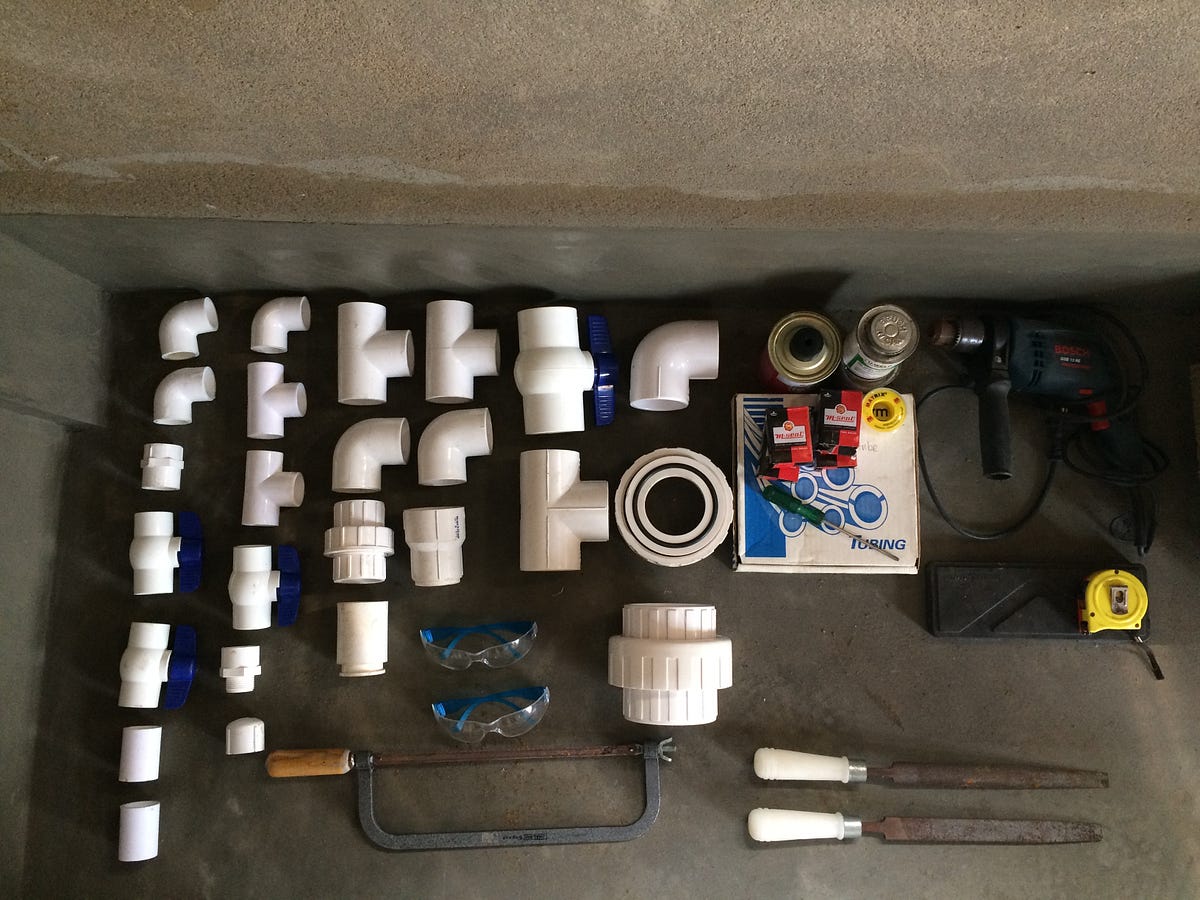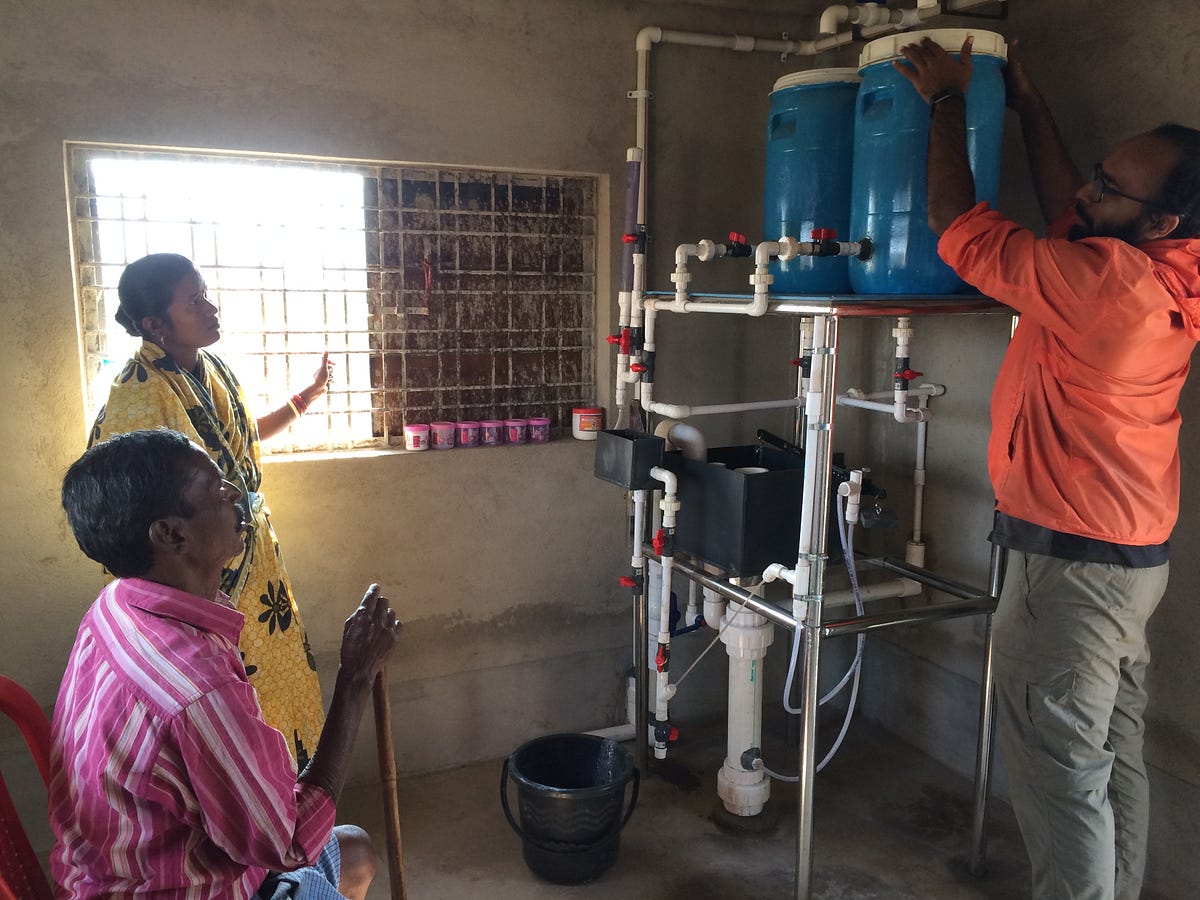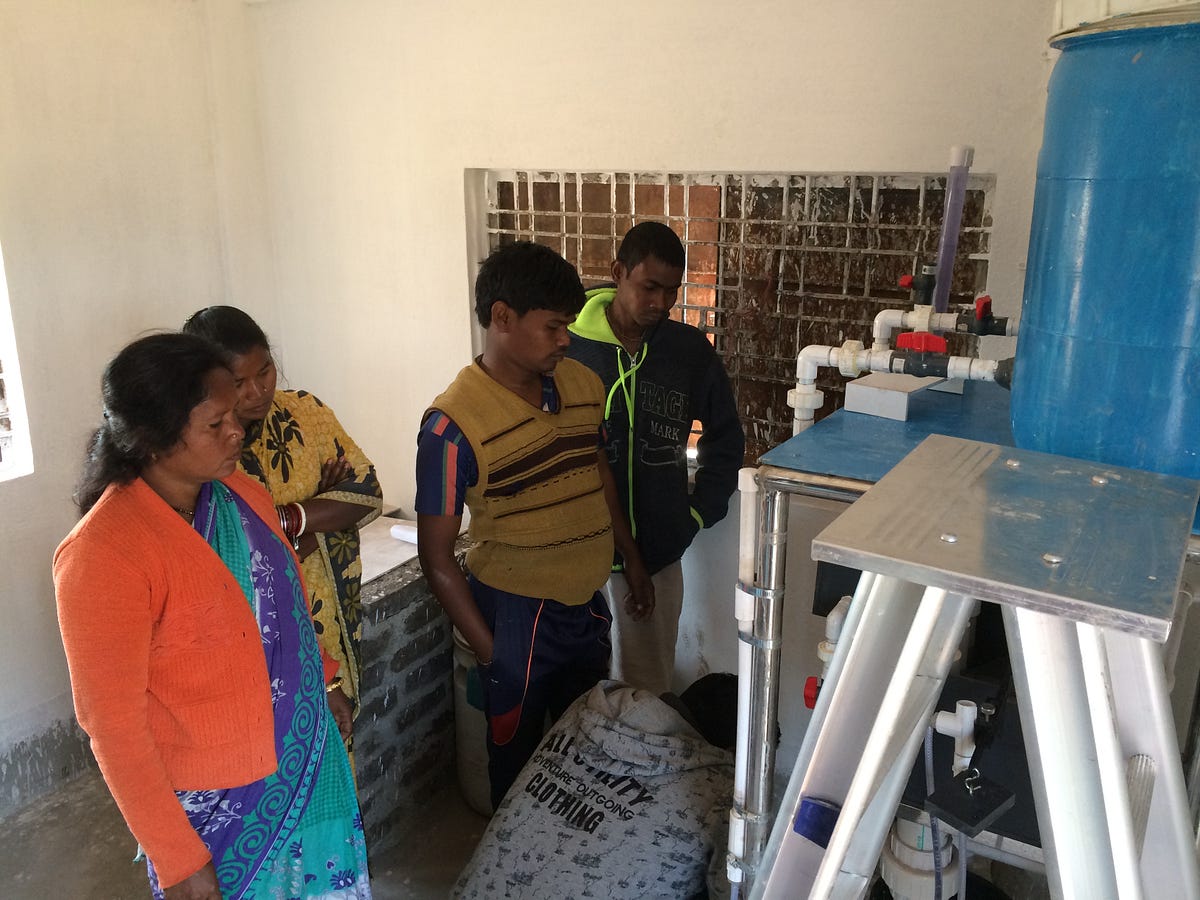206 people. 54 households. 1 AguaClara Hydrodoser.
Published on by Maysoon Sharif, Project Manager at Greeley and Hansen in Non Profit
Following a 7 hour train journey from Bhubaneswar to Bileipada, you get on the always crowded bus heading towards Joda. You manage to grab the last window seat, making it possible to take in all of the sights on the short stretch of road to the village. After passing the Tata Sponge Iron Ltd factory gates and the truck inspection sites, you begin to see the array of yellow-and-blue toilet and bathing room structures typical of a Gram Vikas village. “ Lahanda! Lahanda! Lahanda!” The conductor’s yell is your cue to get off; you have arrived at the village — Lahanda. You walk on the dirt path past one of the six hand pumps that have been the villagers’ primary source of water. You finally reach the place you have traveled long and far for — the Lahanda water tank, home to the AguaClara Hydrodoser.

Circa December 2017: An unpainted Lahanda Water Tank against a cotton candy painted sky.
The Hydrodoser is a simple-to-use nonelectric chlorinator. The Lahanda Hydrodoser is the first of its kind in Odisha, as a project collaboration between Gram Vikas and AguaClara Reach. The Hydrodoser was jointly fabricated in the summer of 2017 in Gram Vikas’ head office in Bhubaneswar. By early August 2017, the system was dispatched to its current home in Lahanda, patiently awaiting four more months for installation. Just like fabrication, installation had its fair share of unexpected problems. However, adaptive innovations in the village ensured the system would still perform as designed. With the system finally installed, the time had come to prepare the operators for operation.

Installation Ready: All of the necessary materials and tools to attach the Hydrodoser to the room.

Installation Complete: The AguaClara Hydrodoser fully installed in the room atop the Lahanda water tank. A ladder has been added to increase operator accessibility of the system.

Purposeful Furniture Additions: A table has also been added to the room. The operators can use it as their workspace to fill out the system logbook, measure bleaching powder for solution preparation, and keep safety gear.

Ventilation and More: Not just good for allowing air flow into the Hydrodoser room, the windows offer scenic views of the neighboring landscape.
Training of the operators has been an ongoing task. Since operator selection in July 2017, there have been 6 training sessions with the operators, with an emphasis on daily operation tasks and responsibilities. The operators have been introduced to the design concepts governing the Hydrodoser system, including but not limited to how chlorine flows through the system, how the system automatically turns on and off, and how to adjust the chlorine dose based on water quality parameters. Even though the operators have been able to display both a theoretical and practical understanding of the Hydrodoser, the real test of system competence remains once the system is finally operational.

Open Training Session: An interested village member attended operator training along with one of the four operators to learn how the Hydrodoser works.

Focused Operators: The operators pay careful attention to Gram Vikas Field Engineer Soubhagya Behera who is identifying the Hydrodoser drain plumbing.

Practice Makes Perfect: Practical training was the main means of instruction after Hydrodoser installation, and Ms. Kasturi Nayak was the first of the operators to volunteer for chlorine solution preparation.
All that remains now is completion of the distribution network and individual household connections. This will finally open the door to start system operation. Although it has taken a long time to get to this stage and there is a long road ahead, this pilot Hydrodoser project is in good hands. Once the operators start running the system, they will begin the new age of water supply in Lahanda. No longer will the people of Lahanda have to spend time carrying buckets of contaminated water to their homes to use for drinking, cooking, and bathing. They will soon be able to access safe water on tap in the comfort of their own homes.
— Written by Subhani Katugampala
Media
Taxonomy
- Treatment
- Water Supply
- Water Sanitation & Hygiene (WASH)
1 Comment
-
Interesting, but along with pathogen contamination, Orissa has high iron contamination and our water purifiers are ideal pathogen and iron removal systems, which are simple to use straight away! We had our own good experience in Orissa on this 27h o January 2018, where we distributed these water purifiers for iron removal as well See report: https://www.linkedin.com/feed/update/urn:li:activity:6364415835561394176 providing filters to schools, primary schools and anganwadis (child care centre of age 0-5 years- preschool). Best day of my life!